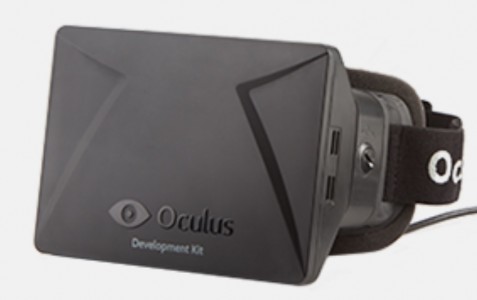It has been a while since my last visit to Second Life with the Oculus Rift. Now that there have been new releases of the Second Life Oculus Rift Project Viewer and CtrlAltStudio Viewer, it seems like a good idea to take the Rift for a Sunday outing and check out what has changed. Second Life has added an Oculus-friendly section to their Destinations listings, so I’ll go check some of those out, as well as some OpenSim based locations.
Overview
For those of you who are just catching up on the Oculus Rift news, here is a short synopsis of their story so far. Palmer Lucky, the founder of Oculus VR, and John Carmack, best known for creating the Doom and Quake video games, on an early prototype of a virtual reality headset and displayed it at the 2012 Electronic Entertainment Expo. That primitive prototype, held together with duct tape, was the hit of the show.

Shortly afterward, Oculus VR launched a Kickstarter campaign to raise funds for the creation of a developer’s kit. The Kickstarter funding goal was met in four hours, a strong indication of the public’s interest in virtual reality headsets and their development for use in immersive virtual environments. Since then, Oculus has released two developer versions of the headset, available for order through their website, and was bought out by Facebook for $2 billion. This acquisition raised Oculus Rift’s profile, and has empowered the company to attract some of the top talent in the electronic development field, including well-known writer and developer Michael Abrash, who is now the Oculus Chief Scientist. Abrash believes that virtual reality is the “last platform†as he explains in this video.
Every month more and more virtual experiences are coded for the Oculus Rift.
The commercial version of the Oculus Rift is expected to be released in late 2014 or early 2015.
Using the Oculus Rift in Virtual Worlds
If you have an Oculus Rift, there are two viewers that will work with it in virtual worlds such as Second Life and OpenSim – the Second Life Oculus Rift Project Viewer and David Rowe’s CtrlAltStudio Viewer , adapted from the Firestorm viewer. For the purposes of this outing, I will use the Second Life Project viewer in Second Life, and the CtrlAltStudio viewer elsewhere.
Places
Now, where to go?
Let’s dial up on the Second Life Destination Guide. The guide’s editors have created a special category for regions to view with the Oculus Rift. Among the selections that look promising for this blog post are Le Mont Saint Michel and the INSPIRE Space Park.
Here are the streets of Le Mont Saint Michel, as shown with the Second Life Oculus Viewer, but in regular view, not the stereoscopic Oculus Rift view.

And a little further along on the island, with the display enabled for the Oculus Rift, you can see that the view has widened, almost to a “fisheye†lens format for each eye . In the lower third of each image, when you tilt your head down, the bottom menu icons can be seen.

When you tilt your head up, you can see the top bar icons and drop down menus, and access them with your mouse, which seems to work a bit more easily in this update of the viewer.

At the INSPIRE Space Park, you will find one of the classic regions in Second Life. Here is the display shown through the viewer, before it is enabled for the Oculus Rift.

And here is the interstellar display again, this time shown through the viewer once it has been enabled for the Oculus Rift.

And over in OpenSim using the CtrlAltStudio viewer, we have a view of the Alchemy Sims Grid castle with the viewer in its “flat display†mode.

Below is the same castle showing the scene with the CtrlAltStudio viewer activated for Oculus Rift. Notice that there are no onscreen menus, but you do have the option to take your avatar out of the scene in the setup menu.

For something different, over in Kitely, there is a lovely sim called Tao, Tao Lia. Below is a screen shot that shows how it looks through the CtrlAltStudio viewer, not yet activated for the Oculus Display.

And the same place in Kitely as viewed with the Oculus Rift display in the CtrlAltStudio viewer.

Conclusion
All in all, the display in both viewers is good and clear.
Having the menu overlaid on the image — as it is in the Second Life viewer — may be useful in some instances, especially when you need to access a setting.
Not having the menu on screen, but being able to toggle back to the flat viewer as you can with CtrlAltStudio, is also useful for image clarity.
Neither of these viewers have the kind of interface you would want to build something in. Perhaps when we have an interface that synchs perfectly with our hands, and can easily show us how to grasp objects in the virtual space, we can stay in our stereoscopic environments full time.
- Oculus viewers updated, still not building-friendly - June 6, 2014
- In-world with the Oculus Rift - March 30, 2014
- 5 tips for video tutorials and 3D simulations - February 17, 2014
